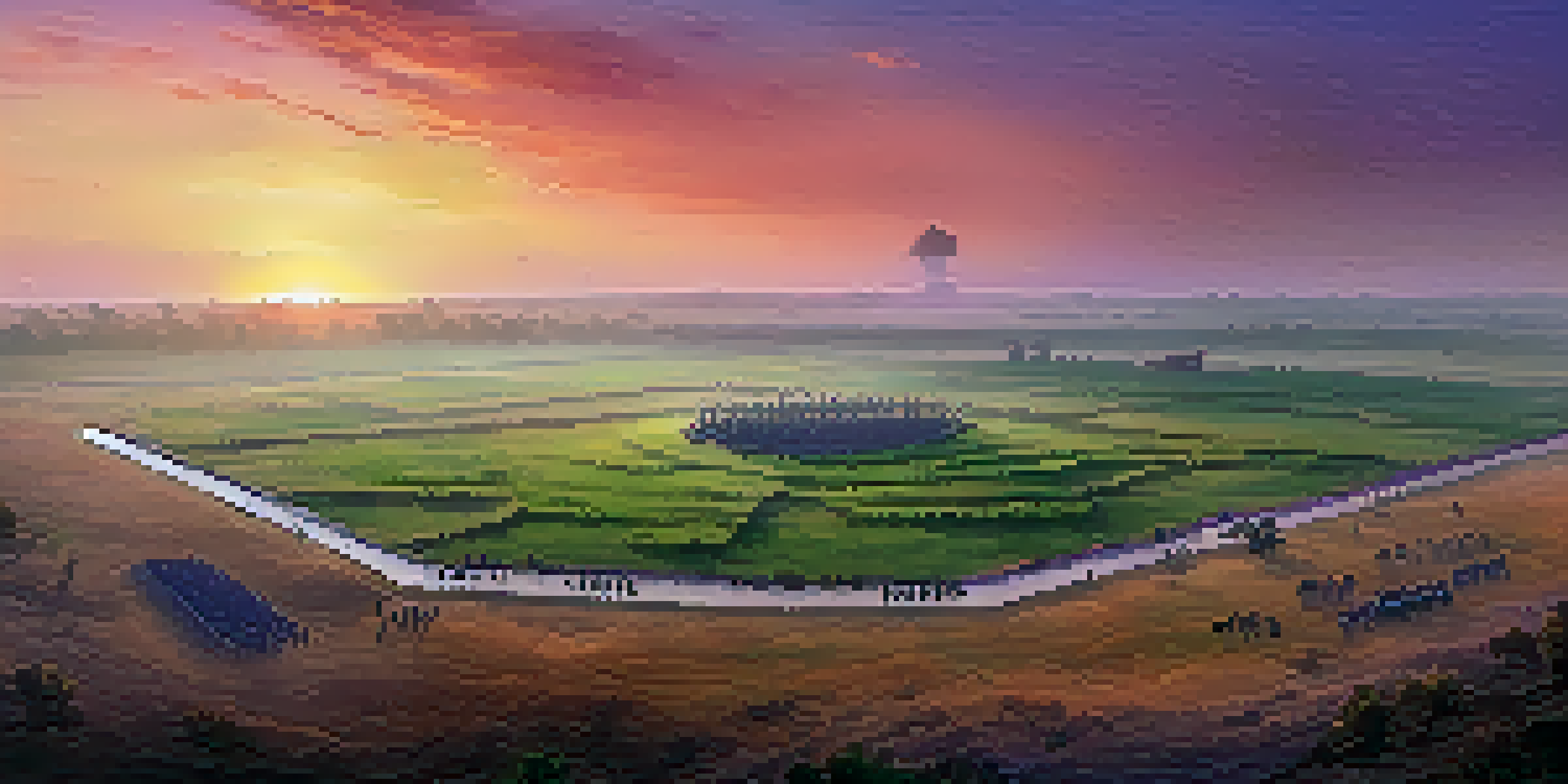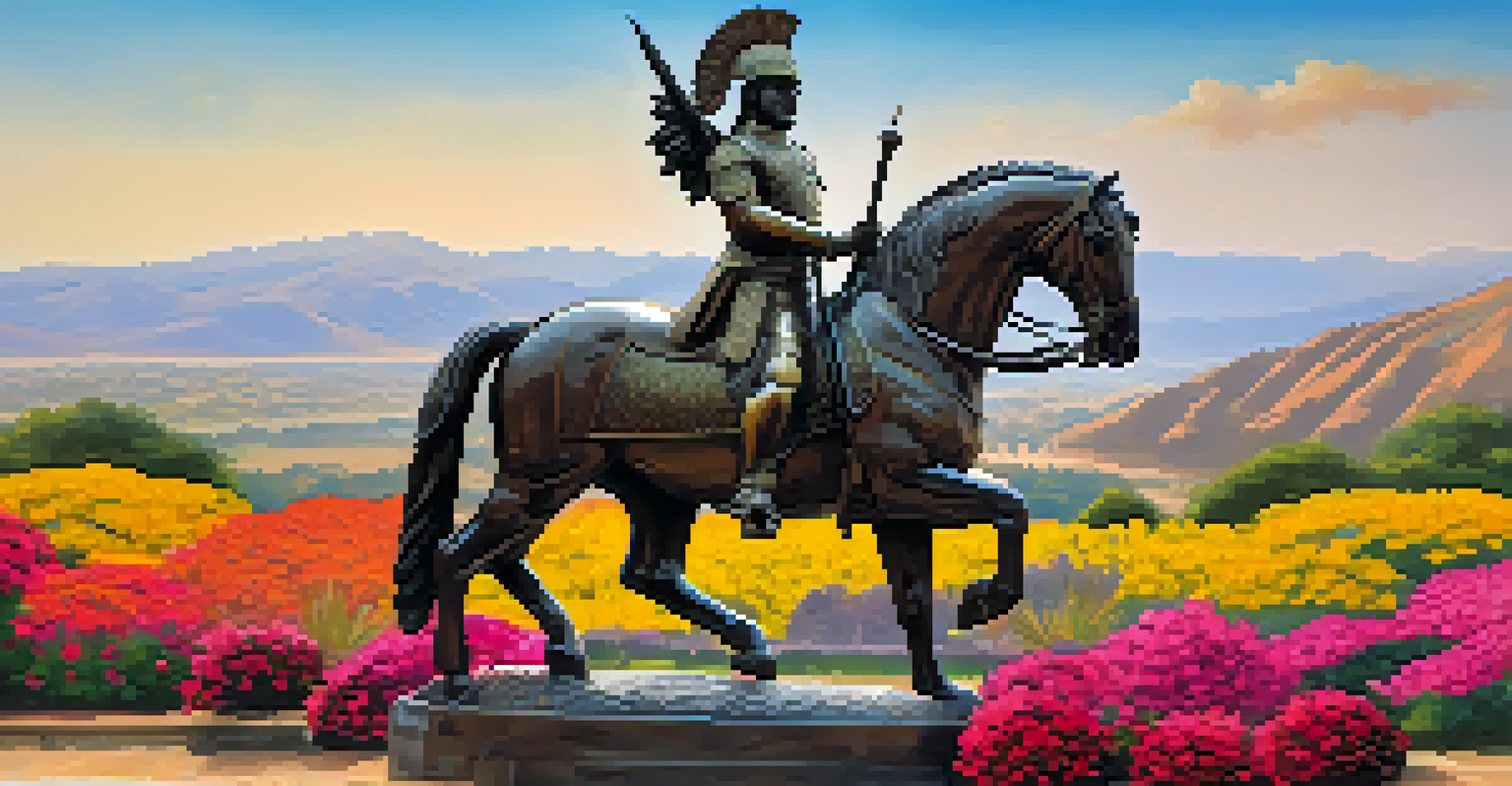Tracing the Paths of Warriors: The Battlefields of India

The Historical Significance of Indian Battlefields
India's battlefields are more than just landscapes; they are sites of profound historical significance. Each battlefield tells a story of valor, strategy, and sacrifice, shaping the course of Indian history. From the ancient times of the Mahabharata to the colonial struggles, these grounds have witnessed the relentless spirit of warriors who fought for their land and beliefs.
The soldier is the Army. No army is better than its soldiers.
Take the battlefield of Panipat, for instance. It has been the site of three crucial battles that defined the power dynamics of northern India. Each conflict brought forth different rulers and changed the fate of kingdoms, illustrating how geography can influence history in significant ways.
Understanding these battlefields allows us to connect with our past on a deeper level. They serve as reminders of the struggles faced by our ancestors and the resilience they exhibited, ultimately shaping the nation we know today.
Panipat: A Turning Point in Indian History
The town of Panipat is synonymous with epic battles, with its three significant conflicts occurring in 1526, 1556, and 1761. Each battle was marked by strategic brilliance and immense bloodshed, leading to major shifts in power. For instance, the First Battle of Panipat saw the rise of the Mughal Empire, forever altering the political landscape of India.

The second battle, fought between the Mughal Empire and the forces of the Maratha Confederacy, illustrated the fierce rivalry for dominance in northern India. It is a poignant reminder of how ambition and power struggles can lead to extraordinary consequences.
Battlefields Shape Indian History
India's battlefields serve as vital historical sites that illustrate the struggles, strategies, and sacrifices of warriors throughout the nation's past.
Today, Panipat stands as a memorial to those who fought valiantly. Visiting the site allows one to reflect on the sacrifices made and the lessons learned from these pivotal moments in history.
The Legacy of the Battlefield of Haldighati
Haldighati, located in Rajasthan, is famous for the fierce battle fought in 1576 between Maharana Pratap and the Mughal army led by Akbar's general, Man Singh. This battle symbolizes the fight for independence and the valor of Rajput warriors. Maharana Pratap's relentless spirit continues to inspire generations, making Haldighati a site of pride.
History is written by the victors.
Despite facing a larger and more equipped army, Maharana Pratap's guerrilla tactics showcased his strategic brilliance. The fierce resistance he offered against the Mughals has become a legendary tale of courage that resonates deeply within Indian history.
Today, Haldighati serves as a pilgrimage for those who admire bravery and valor. It reminds us of the importance of fighting for one's beliefs and heritage, even against overwhelming odds.
The Battlefields of Kalinga: A Lesson in Humanity
The Kalinga War, fought in 261 BCE, is often cited as a transformative moment for Emperor Ashoka. The brutal conflict resulted in massive loss of life, leading Ashoka to renounce violence and embrace Buddhism. This shift in ideology is a powerful reminder of how battlefields can change not just empires, but individuals.
Kalinga's aftermath also highlights the impact of war on society. The devastation led to a reflection on the futility of conflict, influencing Ashoka's policies of peace and non-violence. His teachings have left a lasting legacy on the importance of compassion and understanding.
Panipat: A Crucial Historical Site
The town of Panipat is noted for three significant battles that transformed the political landscape of northern India, marking key turning points in history.
Visiting Kalinga today allows us to ponder the lessons of the past. It serves as a somber reminder that true strength lies not in conquering others but in fostering peace and harmony.
The Siege of Fort William: A Colonial Struggle
The Siege of Fort William in 1756 is a crucial episode in the history of British colonialism in India. It marked the beginning of a fierce power struggle between the British East India Company and Indian rulers, showcasing the complexities of colonial dynamics. The fort's capture led to significant repercussions, including the famous Battle of Plassey.
The siege exemplifies the tensions that arose during the colonial era, where local rulers resisted foreign domination. It also underscored the importance of strategic military planning and the determination of both sides to assert their influence.
Today, Fort William stands as a testament to India's colonial history. It invites us to reflect on the resilience of a nation that fought against oppression while navigating complex power struggles.
The Importance of the Battlefields in Modern India
In contemporary India, battlefields serve not only as historical sites but also as cultural symbols of resilience and unity. They remind us of the sacrifices made by countless warriors and the importance of preserving our heritage. Many battlefields are now recognized as heritage sites, attracting tourists and historians alike.
These sites play a vital role in educating future generations about India's rich past. They offer opportunities for learning and reflection, helping people connect with their history in meaningful ways. Schools often organize trips to these locations, fostering a sense of pride and identity among students.
Legacy of Valor and Resilience
The battlefields of India not only commemorate historical conflicts but also embody the values of courage and perseverance that continue to inspire future generations.
Moreover, preserving these battlefields helps maintain the narrative of courage and sacrifice that defines India's legacy. It encourages a sense of responsibility to honor those who fought for freedom, ensuring that their stories continue to inspire us.
Conclusion: Honoring the Warriors of India
As we trace the paths of warriors through India's battlefields, we uncover layers of history that shape our identity. Each battlefield tells a story of struggle, resilience, and the relentless pursuit of justice. These narratives are essential in understanding the complexities of our past and the lessons they impart.
Honoring the warriors who fought valiantly is crucial in keeping their spirit alive. By visiting these sites and sharing their stories, we pay tribute to their sacrifices and the values they stood for—bravery, honor, and commitment to one's land.

In the end, the battlefields of India are not just remnants of past conflicts; they are powerful symbols of the enduring human spirit. They remind us that history is not merely a series of events, but a tapestry woven with the threads of courage and sacrifice.